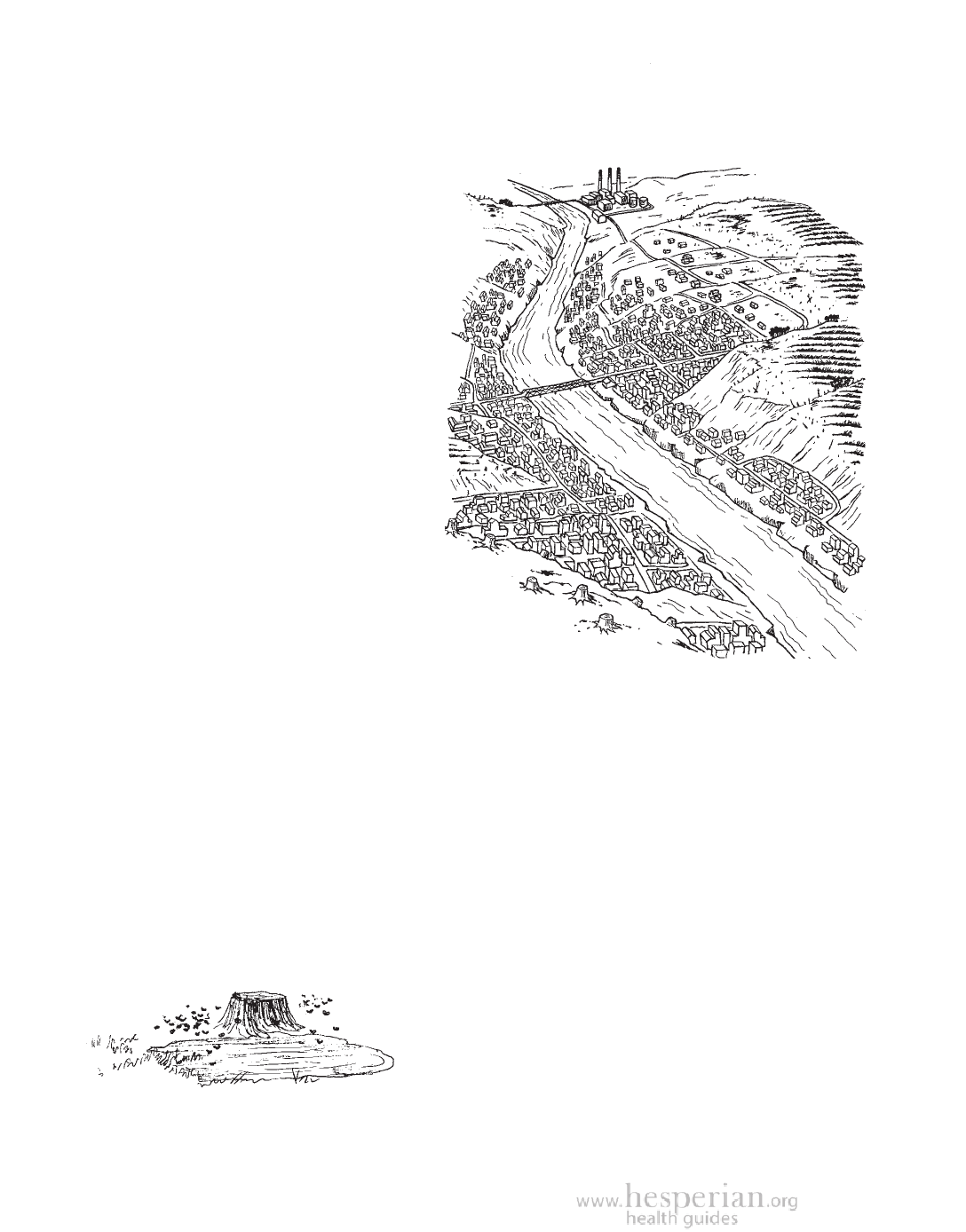
160 Protec ting Watersheds
Health effects of
damaged watersheds
When land is cleared of trees and
plants (deforestation), soil holds
less water, drying up wells and
springs. Dry periods may become
longer or more frequent, causing
all the health problems of not
having enough water (see Chapter
5). Deforestation also causes loss
of soil (erosion, see page 200)
which makes growing food more
difficult, leading to hunger and
migration.
Water contamination from industry, oil, mining,
and industrial farming pollutes water.
When wetlands are destroyed,
they cannot filter toxic pollution
out of the water, leading to
greater contamination. Damage
to wetlands and deforestation
both cause flooding, which leads
to injury, death, and increases in
diarrhea diseases.
Deforestation
makes soil erosion
Changes in a watershed increase
illnesses from mosquitoes
Mosquitoes breed in slow-moving
and standing water. When large or
and flooding worse.
Destroying wetlands by too
much building or paving over
land causes more flooding and
water contamination.
sudden changes are made in how land is used and
how water flows through the watershed, they often create conditions for
mosquitoes to breed. Changes from:
• Digging out riverbeds for building materials like gravel and sand, and
precious minerals like gold, often leaves stagnant pools.
• Damming rivers creates standing water, and changes the way water
flows (see page 170).
• Building roads can block the flow of water and create stagnant pools.
If you can keep the water moving, changes
to the watershed do not have to lead to more
mosquito-borne illnesses such as dengue,
malaria, and yellow fever. For more about
preventing problems from mosquitoes,
see Chapter 8.
A Community Guide to Environmental Health 2012